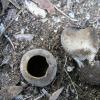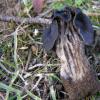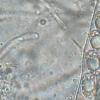
06-12-2025 00:19
 Viktorie Halasu
Viktorie Halasu
Hello, would anyone have this article, please? An

05-12-2025 17:33
 Bruno Coué
Bruno Coué
Bonjour, je serais heureux de recueillir votre avi

02-12-2025 18:59
This pair of ascos 2.5cm across were on recently b

02-12-2025 19:25
Buckwheat PeteHello, can anyone identify this hairy fungus growi

30-11-2025 12:53
 Edvin Johannesen
Edvin Johannesen
White short-stipitate apothecia found on thin twig

30-11-2025 10:47
 William Slosse
William Slosse
I recently found a collection of small Peziza sp.
Helvella sp. ?
VASILEIOS KAOUNAS,
28-02-2008 08:08
It was found in forest Pinus halepensis and pistacia lentiscus.
In the region Schinias-Attiki-Greece, 25-2-08
VASILEIOS KAOUNAS,
28-02-2008 08:10
VASILEIOS KAOUNAS,
28-02-2008 08:13
Nicolas VAN VOOREN,
28-02-2008 08:13

Re:Helvella sp. ?
Yes, no problem for the first species.
Nicolas VAN VOOREN,
28-02-2008 08:15

Re:Helvella sp. ?
For the second one, please give us microscopic features (spore size, spore shape, etc.).
VASILEIOS KAOUNAS,
28-02-2008 08:15
Mario Filippa,
28-02-2008 14:52
Re:Helvella sp. ?
The second species may be Helvella juniperi. The macroscopical appearance is similar to Helvella lacunosa, but normally the ribs of the stipe have blunt edges. The spores longer than 20-21 microns and in good proportion subcylindrical are also typical. You should control the ectal excipulum in a thin section. The ectal excipulum in H. juniperi is thick about 200 microns and made up of chains of inflate cells; in H. lacunosa is thinner (80-120) and with the terminal cells +- clavate and bigger than others.



